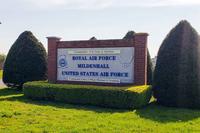
The Royal Air Force has achieved an interesting solution to the problem of replacing its aging fleet of aerial tankers -- VC-10 and TriStar aircraft. Meanwhile, the U.S. Air Force continues its lengthy and, at times torturous, path toward a replacement aerial tanker.
In London the Ministry of Defense has approved a private financing initiative to procure a fleet of 14 Airbus A330 tankers to provide aerial refueling services to the Royal Air Force. The tankers will be owned by the firm AirTanker but will be flown by RAF pilots under the operational control of the RAF. The aircraft will be based at RAF Brize Norton, the largest RAF station and home to the services air transport, tanker, and parachute communities.
The project is estimated to cost US$26 billion over 27 years.
Meanwhile, the U.S. Air Force has received proposals from an EADS (European Aeronautic Defense and Space) and Northrop Grumman team offering the Airbus A330 tanker -- with the U.S. designation KC-30 -- and from Boeing offering the KC-767 based on Boeings 767 passenger-cargo aircraft. The Air Force expects to make a selection by September 2007 with the winning aircraft replacing the 1950s-vintage KC-135E tankers and, most likely, the later KC-135R tankers. (The Air Force also flies the McDonnell Douglas KC-10 in the tanker role.)
The new tanker selected by the Air Force will automatically become a prime candidate to replace several of the numerous specialized variants of the C-135 and Boeing 707 in U.S. service. These include reconnaissance, surveillance, Airborne Warning And Control Systems (AWACS), and research aircraft as well as cargo carriers. (France, Turkey, and Singapore also fly Boeing-built KC-135 tankers. The A330 is the most likely replacement for the French aircraft.)
The EADS-Northrop Grumman tanker can carry 122 tons of fuel in its wings, reportedly about 20 percent more than the proposed KC-767 design. This fuel arrangement allows the A330/KC-30 to carry passengers, cargo, or additional fuel in its fuselage.








